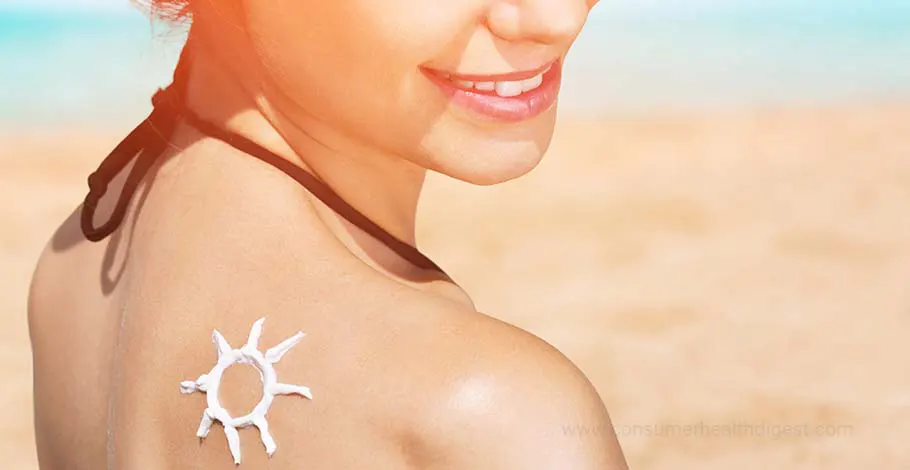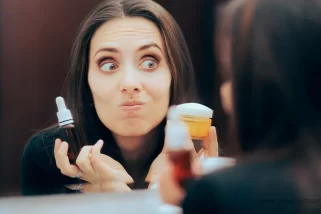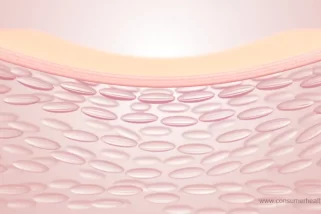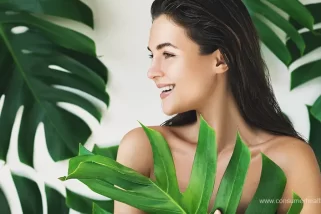In This Article
Sun Protection Overview
With summer upon us it's a good time to review some sun protection facts and advice. While exposure to sunlight is important in helping us to synthesize vitamin D, over exposure is unhealthy. Your skin is your largest organ and you should take measures to protect it from sun damage. Sun exposure is a major contributor to aging of the skin which leads to wrinkles. Exposure to sun causes most of the wrinkles and age spots on our faces. Consider this: One woman at age 40 who has protected her skin from the sun actually has the skin of a 30-year-old. [1]

More importantly, sun exposure can lead to the development of sun damage or skin cancer. These include squamous cell carcinoma, basal cell carcinoma, and, the deadliest, sun exposure melanoma. Getting sunburn, just once, every two years, can triple your risk if melanoma skin cancer. [2]
What Causes Sunburn?
Sun damage occurs from exposure to ultraviolet (UV) radiation which can be broken into two types: UVA and UVB. The heat you feel from sunlight is due to infrared and this does not cause sunburn. You cannot feel UV radiation, but you can feel the effects of overexposure. Even on cool days you can still get sunburnt.UVA radiation typically causes the type of damage that leads to wrinkles and increases the chance of cancer. UVB rays are the ones that cause sunburn.
Skin Types

Basic Skin Type
According to the Fitzpatrick scale3,people fall into one of six basic skin types characterized by the amount of melanin skin pigment. Melanin is one way the body has natural sun protection. The spectrum of skin types from fair to dark are described below:
Type I: Pale white skin, blue/hazel eyes, blond/red hair. Always burns, does not tan.
Type II: Fair skin, blue eyes. Burns easily, tans poorly.
Type III: Darker white skin. Tans after initial burn.
Type IV: Light brown skin. Burns minimally, tans darkly and easily.
Type V: Brown skin. Rarely burns, tans darkly and easily.
Type VI: Dark brown or black skin. Never burns, always tans darkly.
TypeI skin has the least melanin and individuals with this skin type burn very easily; they need to be very vigilant in protecting themselves from sun damage. While individuals with type VI skin have the most natural defense against sun damage, they should still take precautions to protect themselves. Sunburn doesn't have to be raw, peeling or blistering. If your skin has gone pink or red in the sun, it's sunburnt. For people with darker skin, it may just feel irritated, tender or itchy. [3]
There are some medical conditions, such as vitiligo, which cause depigmentation. Patches of depigmented skin are the most vulnerable to sun damage and need sun screen protection.
Photosensitizers
Certain medications and topical agents are photosensitizing. The mechanism involves either a phototoxic or photoallergic reaction to certain medications and sunlight. [4] This means they increase the chance that sun exposure will cause skin problems.
The list of photosensitizing drugs is lengthy and includes many commonly used medications. Many antibiotics, antihistamines, antidepressants, chemotherapy drugs, diuretics, cardiac medications, and non-steroidal drugs are potentially photosensitizing. You should read the patient information portion of prescription meds and/or check with your pharmacist or medical provider if you are uncertain about a particular medication. Retin-A and various perfume oils- bergamot, citron, lavender, sandalwood, cedar, and musk- are known photosensitizers. [5]
Sun Protection
Sun protection is relatively straightforward. Your first strategy should be avoidance. In particular, you want to avoid overexposure. Seek the shade, use protective clothing, and wear a wide brimmed hat. Next, use sunblock. There are many effective rubsand spray-on products. Some of these have emollients that may leave you feeling greasy. There are many greaseless formulations. The important thing is to find a product or products that you are comfortable using. This increases the likelihood that you will actually use sunscreen. Sun radiation is weaker in the mornings and the evenings and the need for protection during these times is less.
Different products vary in their Sun Protection Factor (SPF). The higher the SPF, the greater the protection. As a minimum, I recommend a product of at least SPF 30. This will block 97% of UVB. It’s best to use a Broad Spectrum SPF 45 product that will offer UVA and UVB protection from the sun. Be mindful that some products are water resistant; others will need to be reapplied if you take a dip in the pool, lake, ocean. Read the product label and follow the application guidelines. In general, use a generous amount of sunscreen and apply to all sun exposed surfaces. A second application is advisable as most people do not apply sufficient sunscreen with only one application. Don't forget your nose, lips, and ears. There are sunscreen lip balm products you may want to consider. Don't forget your feet and your scalp. Some products also contain antioxidants. Topical and/or oral antioxidants may have some benefit in repair of sun damaged skin.
Parents should be mindful of protecting children from overexposure to UV radiation. Also, adults caring for the elderly should take measures to ensure their loved ones are protected from overexposure. This includes checking medications that could be photosensitizing. If an elderly loved one is in a nursing home or assisted living, inquire with staff what measures they are taking to protect your loved one during outdoor activities.
Sunburn Treatment Tips

Sunburn Treatment Tips
If you overdo it and get sun burnt, here are some quick suggestions to obtain relief. Use a cool compress to the burned areas—cold water is fine, but cold milk is even better. Use moisturizing products, especially one containing aloe. Hydrocortisone cream can also help with inflammation and itch. There are also topical anesthetic sprays that offer some pain relief. Avoid further sun exposure to areas which are burned. Also, make note of where you got burned and how long you were sun exposed. Avoid repeating the very things that caused your sunburn. Repeated damage to the same areas are frequently what leads to weathered, wrinkled skin. Be on the lookout for skin sores or rashes that do not heal and for pigmented spots such as moles or freckles that are changing in size or color. Any of these represent warning signs for potential skin cancer.
Summary
Ultraviolet rays are the cause for sunburn. Protecting your skin from sun damage will help you have young, healthy skin and reduce your chance of developing skin cancer. Your risk for sunburn is affected by factors such as your skin type, intensity of sun exposure, and photosensitizing agents. Avoid overexposure and take measures, such as using sunblock, to minimize the chance of sunburn. With a little effort, you and your loved ones can enjoy your time out in the sunshine without risking sun damage or sunburn.
5 Sources
We review published medical research in respected scientific journals to arrive at our conclusions about a product or health topic. This ensures the highest standard of scientific accuracy.
[1] Ultraviolet Radiation and Skin Cancer: https://my.clevelandclinic.org/health/diseases/10985-sun-exposure--skin-cancer[2] How does the sun and UV cause cancer?: melanoma skin cancer
[3] Sunburn: https://www.mayoclinic.org/diseases-conditions/sunburn/symptoms-causes/syc-20355922
[4] Hofmann GA, Weber B. Drug-induced photosensitivity: culprit drugs, potential mechanisms and clinical consequences. J Dtsch Dermatol Ges. 2021;19(1):19-29. doi:10.1111/ddg.14314
[5] Sharmeen JB, Mahomoodally FM, Zengin G, Maggi F. Essential Oils as Natural Sources of Fragrance Compounds for Cosmetics and Cosmeceuticals. Molecules. 2021;26(3):666. Published 2021 Jan 27. doi:10.3390/molecules26030666






